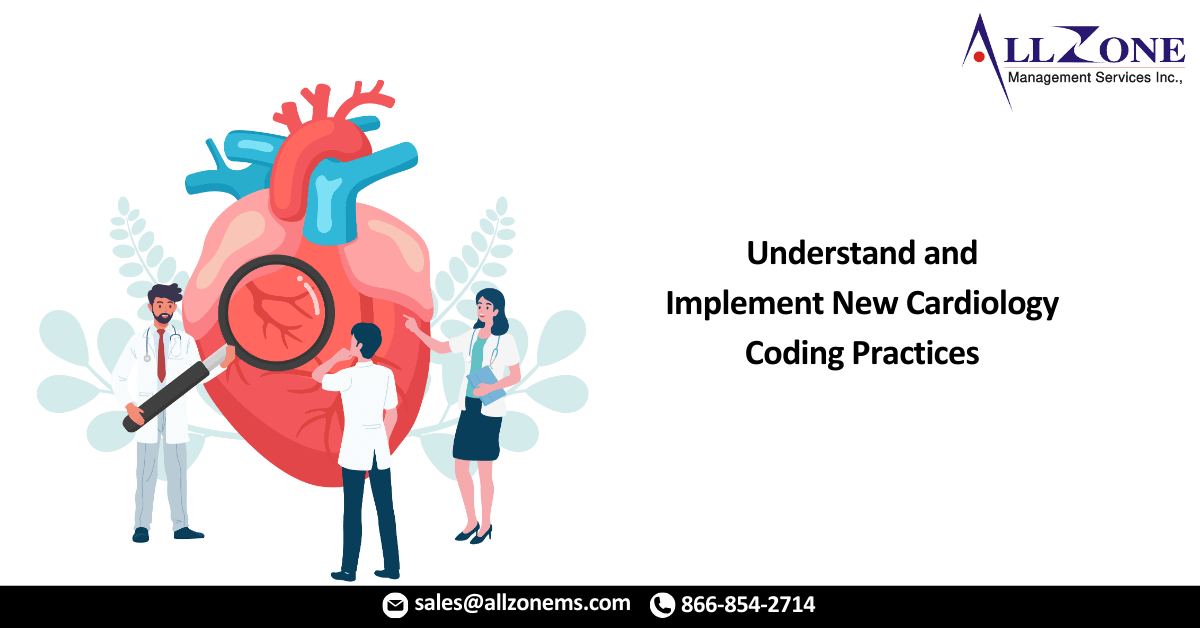Make sure your practice is well versed on the new codes and guidelines outlined in the 2021 CPT® code set.
Advancements spurred by innovation, new technology, and expansion of digital medicine services within the cardiology specialty have increased access to healthcare and, in turn, have resulted in improved health outcomes for patients across the country. The 2021 CPT® code set includes expansion for these new technology services, not only in the Category I section but also in the Category III section of the code book. Here’s what you need to know to ensure proper coding in your cardiology practice.
Continuous Cardiac Monitoring and Detection
Technological advances in the field of continuous cardiac monitoring and detection have prompted the addition of codes 93241–93248, along with associated guideline revisions.
- 93241-External electrocardiographic recording for more than 48 hours up to 7 days by continuous rhythm recording and storage; includes recording, scanning analysis with report, review and interpretation
- 93242 – External electrocardiographic recording for more than 48 hours up to 7 days by continuous rhythm recording and storage; recording (includes connection and initial recording)
- 93243 – External electrocardiographic recording for more than 48 hours up to 7 days by continuous rhythm recording and storage; scanning analysis with report
- 93244 – External electrocardiographic recording for more than 48 hours up to 7 days by continuous rhythm recording and storage; review and interpretation
- 93245 – External electrocardiographic recording for more than 7 days up to 15 days by continuous rhythm recording and storage; includes recording, scanning analysis with report, review and interpretation
- 93246 – External electrocardiographic recording for more than 7 days up to 15 days by continuous rhythm recording and storage; recording (includes connection and initial recording)
- 93247 – External electrocardiographic recording for more than 7 days up to 15 days by continuous rhythm recording and storage; scanning analysis with report
- 93248 – External electrocardiographic recording for more than 7 days up to 15 days by continuous rhythm recording and storage; review and interpretation
These new codes describe the utilization of innovative algorithmic technology that works in concert with a patch that is much easier for patients to wear and provides more accurate and complete data for physician interpretation and analysis.
Your practice should use these codes for dates of service on or after Jan. 1, 2021, in place of Category III codes 0295T, 0296T, 0297T, and 0298T, which were deleted.
CPT® code 93241, for example, is for the Zio Patch®, which the Food and Drug Administration (FDA) approved three years ago. This novel technology is used to monitor for many different types of irregular heart rhythms over more than 48 hours and up to seven days. As of Jan. 1, 2021, you will report this with the Category I code 93241, instead of the 2020 Category III codes 0295T and 0297T.
Shunting for Congenital Cardiac Anomalies
You’ll find five new codes in the Cardiovascular System section of your 2021 CPT® code book, including three new shunting procedure codes for congenital cardiac anomalies:
- 33741 – Transcatheter atrial septostomy (TAS) for congenital cardiac anomalies to create effective atrial flow, including all imaging guidance by the proceduralist, when performed, any method (eg, Rashkind, Sang-Park, balloon, cutting balloon, blade)
- 33745 – TIS creation by stent placement for congenital cardiac anomalies to establish effective intracardiac flow, all imaging guidance by the proceduralist when performed, left and right heart diagnostic cardiac catheterization for congenital cardiac anomalies, and target zone angioplasty, when performed; initial intracardiac shunt
- +33746 – each additional intracardiac shunt location (List separately in addition to the code for the primary service)
Cardiac Assist
In the Cardiac Assist subsection, you’ll find two new codes, as well as revised guidelines for these devices, also known as “impella” devices.
For the insertion of a ventricular assist device in the right heart, report:
- 33995 – Insertion of ventricular assist device, percutaneous, including radiological supervision and interpretation; right heart, venous access only
For the removal of a ventricular assist device from the right heart, report:
- 33997 – Removal of percutaneous right heart ventricular assist device, venous cannula, at separate and distinct session from insertion
For insertion of a ventricular assist device, codes 33990 Insertion of ventricular assist device, percutaneous, including radiological supervision and interpretation; left heart, arterial access only and 33991 Insertion of ventricular assist device, percutaneous, including radiological supervision and interpretation; left heart, both arterial and venous access, with transseptal puncture are revised to specify that the procedure involves the left heart. Code 33990 is reported for arterial-only access, whereas 33991 is used to report an insertion involving both arterial and venous access via a transseptal puncture.
Also, in this section, 33992 Removal of percutaneous left heart ventricular assist device (VAD), arterial or arterial and venous cannula(s) at separate and distinct session from the insertion and 33993 Repositioning of percutaneous right or left heart VAD, with imaging guidance at separate and distinct session from insertion are revised to specify laterality and device. CPT® also clarified that a “replacement” of a percutaneous VAD is reported using implantation codes (33990, 33991, or 33995), and that the “removal” (i.e., 33992, 33997) is not reported when a device is replaced.
For More Information: 52763 understand and implement new cardiology coding practices

